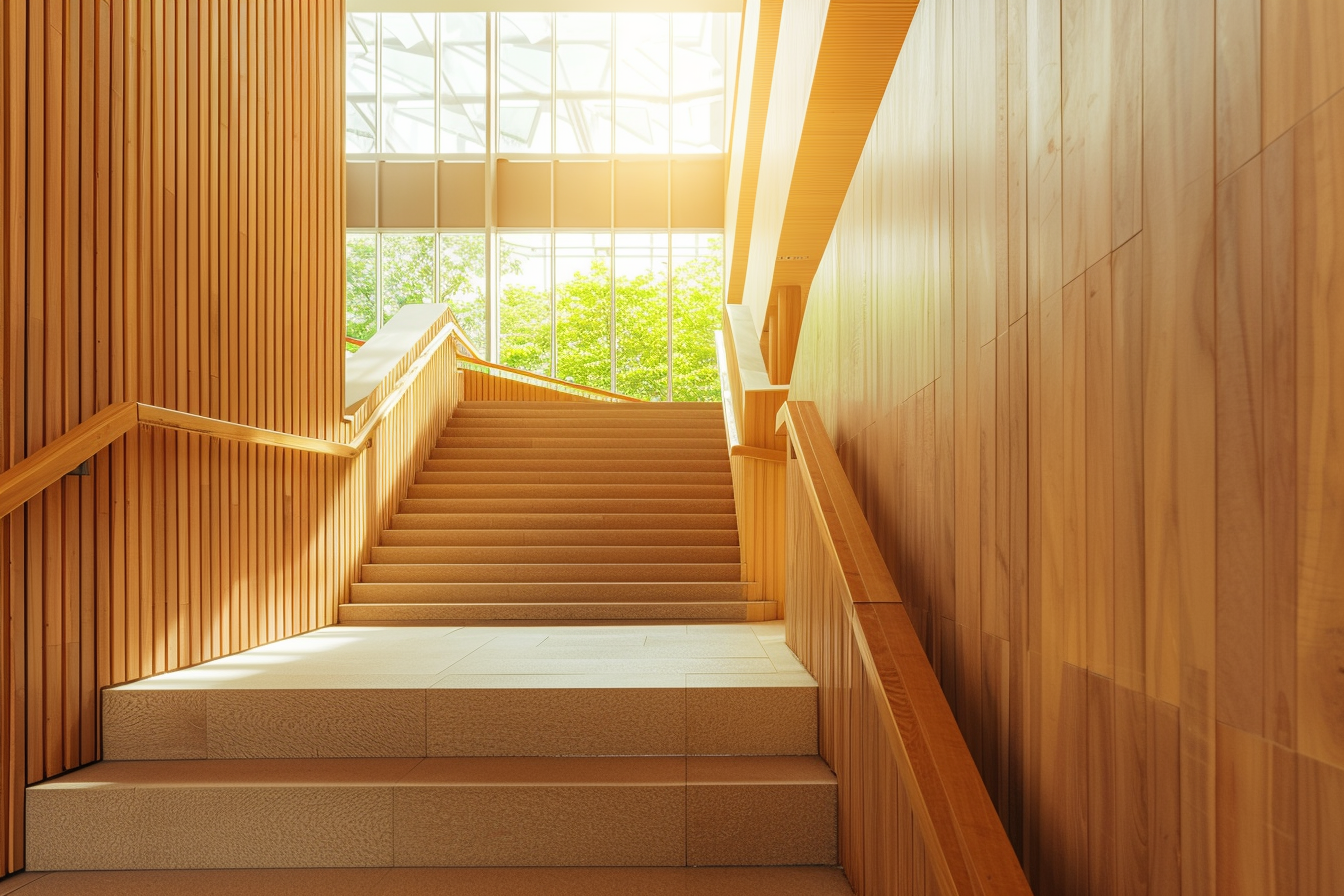Wood in Contemporary Architecture

1. Introduction
Wood has been one of the oldest and most enduring materials in architectural history, prized for its natural aesthetics, versatility, and low carbon footprint. In contemporary architecture, the resurgence of wood is driven by advances in engineered wood products, sustainability goals, and biophilic design principles. Understanding how to specify and use different wood types effectively is essential for recent graduates aiming to integrate both tradition and innovation in their designs. This article explores wood as a material in modern architecture, examining its species, physical and mechanical properties, structural and aesthetic uses, and real-world case studies. It bridges academic understanding with real-world application, equipping new professionals with practical knowledge applicable in various contexts.
2. Why Wood Still Matters in Modern Design
- Sustainability: Wood is a renewable resource with a lower embodied energy compared to concrete and steel.
- Carbon Sequestration: Properly harvested and maintained timber continues to store carbon dioxide.
- Versatility: It can be used for structural systems, interior finishes, and cladding.
- Health and Well-being: Studies show that natural materials like wood improve mental well-being and indoor air quality.
Pro Tip: Specifying FSC-certified wood ensures environmental responsibility and often improves project eligibility for LEED credits.
3. Key Wood Species and Their Architectural Relevance
3.1. Softwoods vs. Hardwoods
- Softwoods (e.g., Pine, Spruce, Fir): Often used in framing and CLT (Cross-Laminated Timber)
- Hardwoods (e.g., Oak, Walnut, Teak): Popular in finishes, flooring, and furniture
3.2. Common Architectural Species
- Douglas Fir: High strength-to-weight ratio; ideal for structural uses
- Western Red Cedar: Excellent durability and weather resistance; used in cladding
- White Oak: Popular in interiors; strong and moisture-resistant
- Bamboo (technically a grass): Widely used in sustainable interior design
4. Engineered Wood Products Engineered wood has revolutionized the use of timber in large-scale architecture by addressing limitations like warping and inconsistent strength.
4.1. Cross-Laminated Timber (CLT)
- Panels composed of layers glued perpendicular
- Enables high-rise timber construction
4.2. Glulam (Glued Laminated Timber)
- Beams created from layers of lumber glued together
- High strength and dimensional stability
4.3. LVL (Laminated Veneer Lumber)
- Used in beams, headers, and rim boards
Pro Tip: Engineered wood is dimensionally more stable and can reduce on-site labor time.
5. Structural Applications Wood is now increasingly used in:
- Framing systems for residential and mid-rise buildings
- Hybrid construction combining timber with steel or concrete
- Tall timber buildings
Case Study 1: Mjøstårnet, Norway
- World's tallest timber building at 85.4 meters
- Structure primarily made from CLT and Glulam
- Energy-efficient with integrated renewable systems
Pro Tip:When designing tall timber buildings, always consider vibration control and fire-resistance ratings early in the design phase.
6. Aesthetic and Interior Design Applications Wood brings warmth and character to interiors:
- Acoustic performance in auditoriums and music halls
- Natural finishes in lobbies and retail environments
- Patterning and texture in ceilings and walls
Case Study 2: Maggie's Centre, Oldham (UK)
- Designed by dRMM Architects using tulipwood CLT
- Open and comforting space for cancer patients
- Prefabricated and assembled quickly on-site
7. Climate and Contextual Considerations7.1. Urban vs. Rural
- In urban projects, fire codes may restrict exposed wood
- In rural contexts, wood blends well with surroundings
7.2. Climate Responsiveness
- Wood expands and contracts with humidity
- Use treated wood in high-moisture or tropical zones
Pro Tip: Use rainscreen systems and breathable membranes to protect exterior wood cladding.
8. Conclusion Wood remains a timeless, high-performance material that continues to shape contemporary architecture. From engineered structural systems to richly textured interior finishes, wood offers aesthetic, environmental, and structural advantages when properly understood and applied. For recent graduates, mastering wood is not just about choosing a species; it’s about knowing how to detail it, protect it, and integrate it into diverse architectural contexts. By learning from notable case studies and aligning with current standards, young architects can confidently use wood as both a design statement and a sustainable solution in their professional projects.